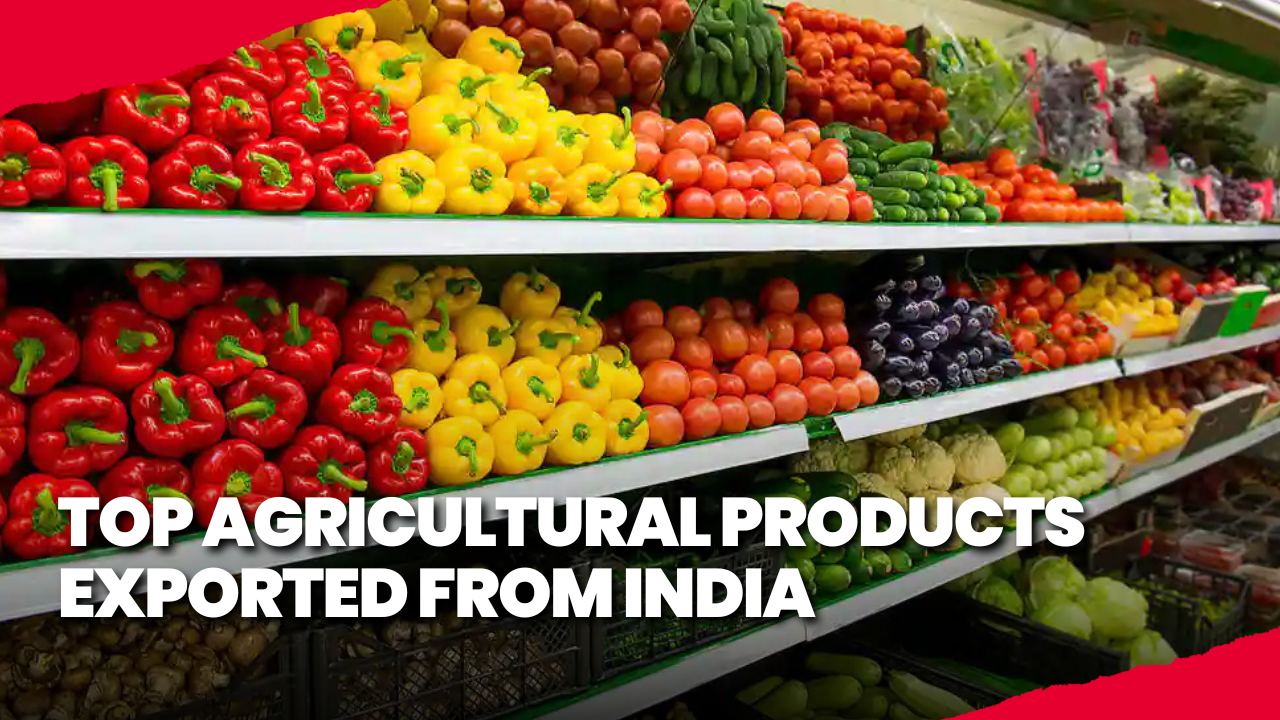
India is one of the biggest providers of agricultural goods and is known as a global agricultural powerhouse. Its wide range of weather and long history of farming make it an important part of meeting the world’s food needs. Agricultural exported from India were valued at nearly ₹4.63 lakh crore in the tax year 2022–23, which is about $56 billion. The country’s goal is to have $1 trillion in farming exports by 2030, so it is still working to increase its exports and solve problems with logistics.
Why India’s agricultural exports are so important
Agricultural exports from India make a big difference in India’s income by-
- Exports bring in valuable foreign currency, which helps balance the trade imbalance.
- When there is more demand for high-quality crops for sale, farmers are generally paid more.
- India is less reliant on local consumption when it exports a wide range of goods.
- Trade builds international relations and improves diplomatic ties with countries that buy goods from other countries.
With a steady focus on quality growth and help from the government, India’s agricultural exports help it stay on top as a world leader in food supply.
Important agricultural products that India exports
India sends a wide range of agricultural goods, from basic grains to high-value final products. Here are the best agricultural products
exported from India that make a big difference.
1. Rice
India exports more rice than any other country, and it includes both basmati and other types of rice. India sent more than ₹90,000 crore worth of rice abroad in this year 2022–23. Agricultural exports from India are primarily driven by the country’s high quality, low prices, and strong supply chains.
The Middle East, some African countries, and Europe are important markets for Indian rice. Demand for Indian rice keeps growing in these places.
India is still the biggest player in the international rice trade because of its long history of skill in growing rice and its use of new technologies in farming and irrigation.
2. Spices
With over ₹30,000 crore in exports in the current year, India continues to lead the world in the spice trade, earning the name “land of spices.”
For their rich flavors, medicinal benefits, and culinary uses, turmeric, cumin, and cardamom are the most famous spices that are the best agricultural products exported from India.
The United States, the United Arab Emirates, and Southeast Asian countries buy a lot of Indian spices. It’s not just the authentic taste of Indian spices that makes them popular in foreign markets; they’re also good for you to eat.
India has a strong position in the spice trade, benefiting from its wide range of farming methods and well-known trading network.
3. Coffee and tea
On the world market, Indian tea, especially Assam and Darjeeling, has a special place. In this year, India’s tea exports were worth ₹8 billion, and its coffee exports, mostly robusta and arabica, brought in an extra ₹4 billion.
World-famous Indian tea and coffee are known for their unique tastes and high-quality production methods.
People from India mostly buy tea and coffee from Europe, the United States, and countries in the Middle East. Demand for these drinks is growing. India’s tea and coffee growers constantly come up with new ideas, which keeps the country strong and competitive in global markets.
Also Read This: What Are Negotiable Instrument Features?
4. Fruits and Vegetables
India exports a lot of fresh and processed fruits and veggies. In 2023, their total worth was more than ₹25,000 crore. Best agricultural products exported from India include mangoes, bananas, grapes, and onions, which are known for their high quality and exceptional taste.
India’s agricultural products have grown even more because more people around the world want organic food and fresh, high-quality vegetables.
India is one of the biggest suppliers of fruits and veggies to markets around the world because it can keep up with strict quality control standards and meet the growing demand for fresh and organic food.
5. Oilseeds and Pulses
Along with pulses, India is a major producer of oilseeds like soybeans and groundnuts. These foods are important to the world’s food supply chain.
Exporting oilseeds and lentils from India helps the country’s farming industry and makes sure that others always have access to basic food items. India has grown its presence in key foreign markets and also serves its own people. This has made its oilseeds and pulses highly demanded.
Key Export Destinations
India’s agricultural products find buyers across the globe. The leading importers are listed here.
- USA
- UAE
- Netherlands
- China
Government Initiatives Supporting Agricultural Exports
The Indian government has introduced several initiatives to boost agricultural exports, such as-
- Remission of Duties and Taxes on Export Products (RoDTEP)
- Agricultural Export Policy
- APEDA (Agricultural and Processed Food Products Export Development Authority)
Challenges in Agricultural Exports
- High transportation costs
- Quality Standards
- Weather Dependencies
- Market volatility
Wrapping It Up
India’s agricultural exports have a huge amount of potential because they are very diverse, they focus on quality, and the government is involved in a smart way. India is in an ideal position to meet the growing demand for agricultural products everywhere because of these strengths.
FAQs
India exports mostly grains, spices, tea, coffee, fruits, vegetables, oilseeds, and pulses.
USA, UAE, Netherlands, and China import the most.
The government supports exporters with RoDTEP, Agricultural Export Policy, and infrastructure upgrades.
Also Checkout Our YouTube Channel: @limeinstituteofexportimport






